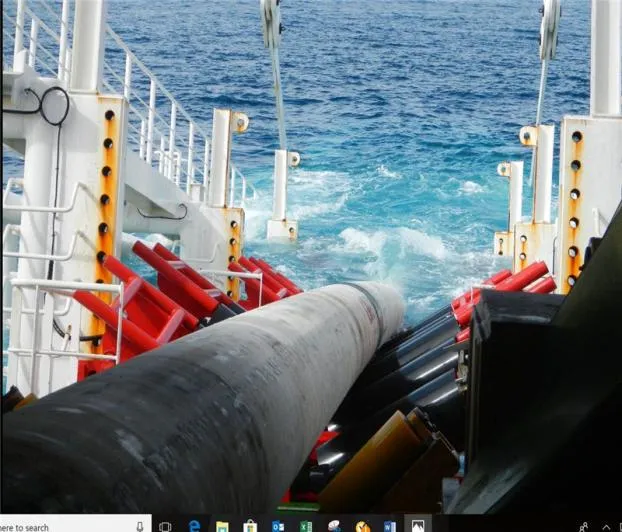- Industrial zone, South of Anping Town, Hengshui, Hebei, China.
- sales@hfpetromesh.com
- +86-18931809706
 Afrikaans
Afrikaans  Albanian
Albanian  Amharic
Amharic  Arabic
Arabic  Armenian
Armenian  Azerbaijani
Azerbaijani  Basque
Basque  Belarusian
Belarusian  Bengali
Bengali  Bosnian
Bosnian  Bulgarian
Bulgarian  Catalan
Catalan  Cebuano
Cebuano  Corsican
Corsican  Croatian
Croatian  Czech
Czech  Danish
Danish  Dutch
Dutch  English
English  Esperanto
Esperanto  Estonian
Estonian  Finnish
Finnish  French
French  Frisian
Frisian  Galician
Galician  Georgian
Georgian  German
German  Greek
Greek  Gujarati
Gujarati  Haitian Creole
Haitian Creole  hausa
hausa  hawaiian
hawaiian  Hebrew
Hebrew  Hindi
Hindi  Miao
Miao  Hungarian
Hungarian  Icelandic
Icelandic  igbo
igbo  Indonesian
Indonesian  irish
irish  Italian
Italian  Japanese
Japanese  Javanese
Javanese  Kannada
Kannada  kazakh
kazakh  Khmer
Khmer  Rwandese
Rwandese  Korean
Korean  Kurdish
Kurdish  Kyrgyz
Kyrgyz  Lao
Lao  Latin
Latin  Latvian
Latvian  Lithuanian
Lithuanian  Luxembourgish
Luxembourgish  Macedonian
Macedonian  Malgashi
Malgashi  Malay
Malay  Malayalam
Malayalam  Maltese
Maltese  Maori
Maori  Marathi
Marathi  Mongolian
Mongolian  Myanmar
Myanmar  Nepali
Nepali  Norwegian
Norwegian  Norwegian
Norwegian  Occitan
Occitan  Pashto
Pashto  Persian
Persian  Polish
Polish  Portuguese
Portuguese  Punjabi
Punjabi  Romanian
Romanian  Russian
Russian  Samoan
Samoan  Scottish Gaelic
Scottish Gaelic  Serbian
Serbian  Sesotho
Sesotho  Shona
Shona  Sindhi
Sindhi  Sinhala
Sinhala  Slovak
Slovak  Slovenian
Slovenian  Somali
Somali  Spanish
Spanish  Sundanese
Sundanese  Swahili
Swahili  Swedish
Swedish  Tagalog
Tagalog  Tajik
Tajik  Tamil
Tamil  Tatar
Tatar  Telugu
Telugu  Thai
Thai  Turkish
Turkish  Turkmen
Turkmen  Ukrainian
Ukrainian  Urdu
Urdu  Uighur
Uighur  Uzbek
Uzbek  Vietnamese
Vietnamese  Welsh
Welsh  Bantu
Bantu  Yiddish
Yiddish  Yoruba
Yoruba  Zulu
Zulu
- Afrikaans
- Albanian
- Amharic
- Arabic
- Armenian
- Azerbaijani
- Basque
- Belarusian
- Bengali
- Bosnian
- Bulgarian
- Catalan
- Cebuano
- Corsican
- Croatian
- Czech
- Danish
- Dutch
- English
- Esperanto
- Estonian
- Finnish
- French
- Frisian
- Galician
- Georgian
- German
- Greek
- Gujarati
- Haitian Creole
- hausa
- hawaiian
- Hebrew
- Hindi
- Miao
- Hungarian
- Icelandic
- igbo
- Indonesian
- irish
- Italian
- Japanese
- Javanese
- Kannada
- kazakh
- Khmer
- Rwandese
- Korean
- Kurdish
- Kyrgyz
- Lao
- Latin
- Latvian
- Lithuanian
- Luxembourgish
- Macedonian
- Malgashi
- Malay
- Malayalam
- Maltese
- Maori
- Marathi
- Mongolian
- Myanmar
- Nepali
- Norwegian
- Norwegian
- Occitan
- Pashto
- Persian
- Polish
- Portuguese
- Punjabi
- Romanian
- Russian
- Samoan
- Scottish Gaelic
- Serbian
- Sesotho
- Shona
- Sindhi
- Sinhala
- Slovak
- Slovenian
- Somali
- Spanish
- Sundanese
- Swahili
- Swedish
- Tagalog
- Tajik
- Tamil
- Tatar
- Telugu
- Thai
- Turkish
- Turkmen
- Ukrainian
- Urdu
- Uighur
- Uzbek
- Vietnamese
- Welsh
- Bantu
- Yiddish
- Yoruba
- Zulu
Exploring Materials Used in Shale Shaker Screens for Optimal Performance
The Importance of Shale Shaker Screen Materials in Drilling Operations
In the drilling industry, the efficacy of shale shakers is paramount, as they play a critical role in the separation of drilled solids from the drilling fluid. The screens used in these shale shakers are particularly important, as they directly impact the overall efficiency and effectiveness of the drilling process. Understanding the materials used in shale shaker screens can provide insights into their performance, durability, and suitability for various drilling conditions.
The Importance of Shale Shaker Screen Materials in Drilling Operations
One of the most common materials used in the production of shale shaker screens is stainless steel. Known for its strength and resistance to corrosion, stainless steel is ideal for high-performance applications. It ensures durability and longevity, which are crucial in reducing maintenance costs and downtime during drilling operations. Additionally, stainless steel screens can be manufactured with various mesh sizes, allowing for the precise separation of solids based on the specific requirements of the drilling process.
shale shaker screen material

Another material gaining traction in the shale shaker screen market is synthetic polymers. These materials, including polyurethane and polystyrene, offer specific advantages such as lightweight construction and enhanced flexibility. Synthetic screens can be engineered to possess varying degrees of permeability and tensile strength, catering to different drilling environments and fluid types. Their resilience to chemicals and moisture also makes them suitable for a wide range of drilling fluids, whether water-based or oil-based.
The design and construction of shale shaker screens also undergo constant innovation. Recent advancements have focused on creating composite screens that combine the best features of both metal and synthetic materials. These composite screens aim to provide the strength and durability of metal while benefiting from the lightweight and flexible nature of synthetics. Moreover, the incorporation of advanced engineering techniques such as perforation patterns and wedge wire designs enhances the screens' efficiency in solid-liquid separation.
The choice of shale shaker screen material is not solely driven by performance metrics. Economic factors also play a significant role. Operators must balance the upfront costs of high-quality screens against the long-term benefits they provide, such as reduced maintenance, increased efficiency, and lower disposal costs for waste materials. Consequently, selecting the right material and design is essential for optimizing both operational and financial outcomes in drilling projects.
In conclusion, the materials used in shale shaker screens are pivotal in determining their performance and effectiveness in drilling operations. Stainless steel, synthetic polymers, and innovative composite materials each offer unique benefits and challenges, influencing the decision-making process for drilling companies. As technology advances, the development of more efficient and durable screen materials will continue to shape the future of drilling, ensuring that operators can meet the ever-growing demands of the industry while maximizing resource extraction.
-
Welded Steel Bar Grating: The Rugged Industrial Flooring Solution Built for Load and LongevityNewsJun.24,2025
-
Steel Walkway Grating: Reliable, Resilient, and Built for Every StepNewsJun.24,2025
-
Shale Shaker Screen for Sale: Optimize Drilling Efficiency with Precision Screening PowerNewsJun.24,2025
-
Shaker Screen for Sale: Elevate Your Drilling Efficiency with Durable Separation SolutionsNewsJun.24,2025
-
Press Locked Steel Grating: Industrial Strength with Precision Fit for Heavy-Duty ApplicationsNewsJun.24,2025
-
Perimeter Safety Netting: The Critical Safety Upgrade for Every HelipadNewsJun.24,2025